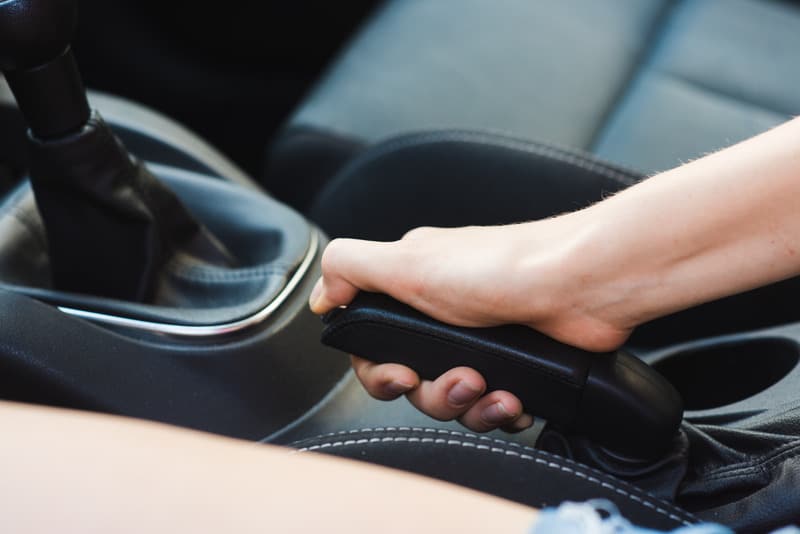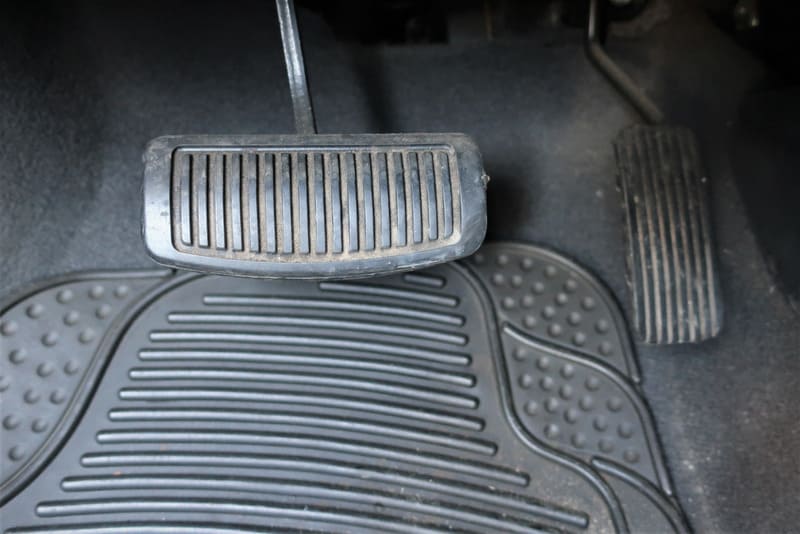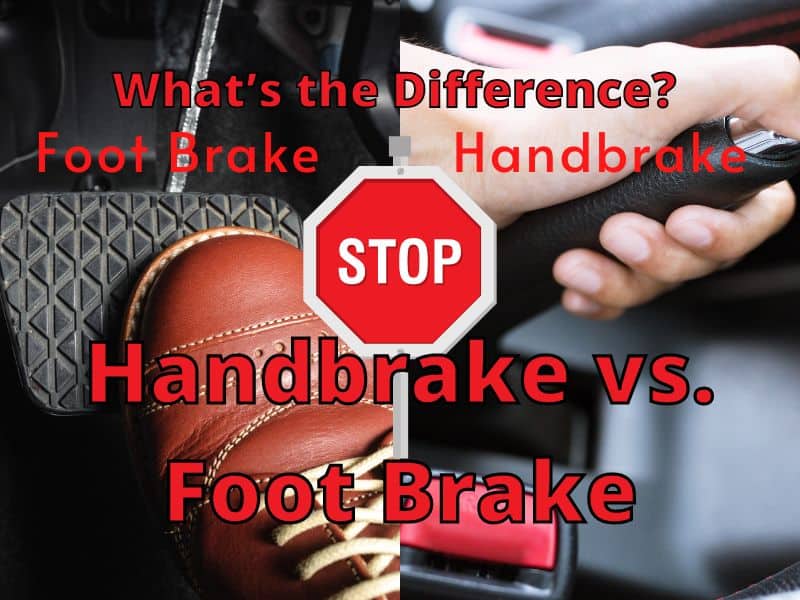Understanding the functions of the various brake systems in a car is crucial to its operation. While handbrake and foot brakes give you an idea as to how you should operate them (with your hands and feet), it isn’t often clear how they work or when you should use them. Both braking mechanisms are necessary for optimal safety while operating a vehicle.
The major difference between a handbrake and a foot brake is that the handbrake engages the rear wheels in the event of the need for immediate stopping or additional support, and the foot brake controls the stopping of the car through friction placed on all four wheels while the car is moving.
We will go into more detail as to how these brakes operate to allow you to stop a car in varying situations. Learning more about how they work and the difference between handbrake and foot brake not only provides you with interesting information about how your car works but can help you if something needs repair.
Mechanical Differences Between a Handbrake vs. Foot brake
Beyond the physical location of the foot brake next to the gas pedal that you control with your feet, and the handbrake is a pull lever controlled by hand, there are very different technical mechanisms controlling both. Understanding the differences between the two provides you with useful knowledge of the inner workings of your vehicle and when to use both brakes.
The technology used to control your braking systems varies quite significantly from handbrake to foot brake. Let’s look at the technical differences and setup for both.
How does a Handbrake work?

Handbrakes, which can serve as emergency and parking brakes, are found as a single lever near the gear shifter. Handbrakes are part of auxiliary brake systems that support your foot brake in the event that it doesn’t work or you need additional support.
Performance vehicles almost always have a handbrake, while other models may design these auxiliary brakes as a foot pedal.
Handbrakes are specifically different from foot brakes and even other auxiliary braking systems because their primary job is to stop and lock the use of the back wheels, while foot brakes engage the front wheels, often through automatic braking systems and hydraulic systems in modern-day cars.
Acting on the rear wheels with a mechanical braking system, handbrakes are attached to a cable that runs to these wheels and operates levers that engage the brake. In back wheels, drum brakes are typically used, where the levers press the brake against the drum and therefore slow the car down.
Most cars will use drum brakes where the handbrake can directly attach to the rear wheels, but some have disc brakes.
If a handbrake is applied to a disc brake system, there are additional levers connected to the caliper and pistons on the brake to control brake pads. A corkscrew will press against the caliper, which engages the brake pads to stop the car.
These are the major points you need to remember when comparing a handbrake to a foot brake:
- Handbrakes are almost always mechanical systems that bypass the foot brake system entirely to offer an additional layer of safety.
- These parking brakes or emergency brake systems can be found as handbrakes, foot pedals, or electric brakes (in more modern cars)
- Cars with rear disc brakes will require additional levers to engage the handbrake through the caliper vs. a direct lever in a drum brake.
Foot Pedal Brakes
It is also important to note that there are differences between emergency brakes: ones that are designed as handbrakes and ones that are engaged with a foot pedal.
The foot pedal brakes are often found to the left of your gas pedal, and the foot brake is on the car floor. They operate using the same technology as the handbrake but may be preferred in varying driving situations.
It is often preferred to use a handbrake versus a foot brake, especially when trying to use the brake on a hill. Engaging the brake with your hand is often easier than using your foot when situated in areas with greater slopes.
The difference in the location of parking or emergency brake will largely depend on the age and model of the vehicle.
Using Electronic Braking
Many cars are coming out with electronic braking. These cars may not have any handbrake to pull on or push with your foot. On these cars, there are buttons to push and pull.
Each car has different features to help you operate the brakes and stay safe while parking, coming to a stop, or in the case of an emergency situation.
This video explains how the Honda Civic’s electronic braking works.
How do Foot Brakes work?
Drivers rely on their foot brakes to do a majority of the stopping in a car. Modern vehicles (typically those made after the 80s), vehicles will use an automatic or hydraulic braking system.
These systems use pressurized fluid to engage when the brake pedal is pressed and engage the brakes.
This is the process of hydraulic braking that occurs to stop a car from the moment you press the foot brake pedal:
- Pressing the foot brake pedal: Applying force to the foot brake creates added pressure to the vacuum that is attached to the motor. This moves the piston within the master cylinder to engage the fluid reservoir.
- Release of brake fluid: The opening of the brake fluid reservoir is triggered by the added force from the piston in the master cylinder. This allows the brake fluid to move towards the brakes as a pressured liquid.
- Reaches caliper: In the front wheels, the pressured fluid meets the caliper, which is responsible for engaging the brakes in a disc brake system. As the pressure from the fluid increases, the caliper presses on the brake pad, and friction forces the wheel to stop.
- Back wheel braking: The fluid also stops the back wheels with drum brakes by forcing pistons to engage and press the brake pads to expand and close the space so the rotating drum cannot move.
As we noted, braking the car is a result of friction between the mechanisms in the brake and the pads that are applied to slow it down. When a car is moving, it produces a lot of kinetic energy. Friction to engage the braking system is created when converting this energy into heat, which is dispelled from the vehicle. This friction is applied to both the front and back wheels.
In hybrid and newer electric cars, this kinetic energy can actually be transferred back into the car’s battery through regenerative braking. Instead of converting the kinetic energy to heat that cannot be used, the car serves as a generator that can reuse that energy. Larger vehicles that can take advantage of more generated kinetic energy often benefit more from this system.
Drum Brakes vs. Disc Brakes
Drum brakes are named for their similar appearance to a drum that employs brake shoes that will expand outward in a wide cylinder to slow a car down. Disc brakes use a single, flat metal rotor that will spin until a caliper forces the brake pads to press against the disc, creating friction and stopping the wheel.
Both systems employ friction to stop the wheels, with older cars (those produced before the mid-1970s) primarily using drum brake systems as they were invented first. Once the disc brakes were developed, they became the preferred braking system because they are more efficient and longer-lasting than drum brakes.
These are the advantages of using disc brakes and why they are used for front wheels compared to older drum brake systems:
- Energy transfer: When reaching high heat levels from the transfer of kinetic energy, discs are able to handle and relieve heat more easily.
- Durability: With the heavy braking that may occur, disc brakes last longer and can handle more brunt impact over a longer period of time.
- Wet conditions: Drum brakes are much more likely to come in contact with water or expose brake pads to water compared to a disc that wicks it away.
Most modern cars will use all disc brakes or at least use them on the front wheels. Because most of the impact and energy from a moving vehicle is transferred to the front brakes when stopping or slowing down, you’ll want the ‘better’ braking technology to receive the brunt of the impact.
Drum brakes are often used on many rear wheels still because they are much more economical and can handle the limited pressure they’ll receive compared to the front brakes. Drum brakes also are much more efficient and compatible to be used as parking brakes, as disc brakes will require more braking configuration.
When to Use a Handbrake vs. Foot Brake?
Now that you understand how each of these braking systems works, it is important to know when to use them. As you have noticed, a foot brake system involves all of the wheels versus a handbrake system that engages only the rear wheels.
This also provides us with some insight into their necessary function and how reliant we should be on both.
Think of your foot brake as a way to stop a car and your handbrake as a way to keep the car where you stopped it. A foot brake is used to stop a car while driving, and a handbrake keeps the car steady or in place when you plan to park.
When to Use A Handbrake?
A handbrake is a very useful tool that is primarily used for parking and emergency braking situations, with more cases falling into the former category. A handbrake is also referred to as a parking brake because it is useful in both manual and automatic vehicles to ensure that the car does not move.
The most common situations in which you will want to engage a handbrake to include:
- Parking with a manually operated vehicle
- Parking on a hill or slope
Manual Transmissions
Cars with manual transmissions do not have parking gear as automatic vehicles do. You must place the car in neutral and then engage the handbrake to ensure that the car will not move.
When driving a manually operated vehicle, this is the only way to safely park the car. At longer stoplights or stuck in traffic, you can also engage the handbrake and place it into neutral.
Automatic Transmissions
For cars with automatic transmissions, using the handbrake is a great safeguard and support for your primary braking system. This is especially true when parked on a hill or slope.
We recommend using the parking brake in addition to shifting the car into the park. Be sure to engage the parking brake before placing the car in park. This provides stability and support.
Parking on an Incline

When parking on a slope, gravity acts against the heavyweight of the car and places more pressure on the braking system. When employing the handbrake and the parking gear in an automatic vehicle will prevent accidents from occurring in the event that something happens to your primary braking system.
Because the handbrake works with the rear wheels, performance vehicles will sometimes engage the handbrake for skidding or drifting the car. The easy access between the seats allows racers to make tight turns, but it does result in a decrease in speed.
This maneuver is not recommended for use by vehicle owners and amateur drivers, as it is very dangerous.
When to Use a Foot Brake?

You will most often use a foot brake while driving to slow down your car or come to a complete stop.
Anytime you want to stop the car while it is in motion, you should engage the foot brake. If you try to stop the car with the handbrake while moving, this will cause the rear wheels to lock up, and you could drift or lose control.
- In a manual transmission, you will need to engage the clutch anytime you choose to brake (just as you would to move the car into another gear or press the gas pedal).
- In an automatic, you can press the foot brake to slow the car down. In addition to stopping the car, the foot brake can also be used to start the car in many models.
Newer vehicles may use a start and stop button to turn the vehicle on. If this is the case, you will need to press down on the foot brake before the car turns on. This is an added safety feature, and it triggers the engine to start.
As the front wheels take a majority of the impact, the foot brake should be used if you are approaching something quickly in front of you. Do not pull the handbrake in these situations, especially if traveling at high speeds.
The primary braking system will be able to stop the car in a much more controlled manner than trying to rely solely on your auxiliary braking system.
What Should You Do If Brakes Don’t Work?
In the rare event that your brakes fail, you will want to be well-equipped with steps to take. This is a dangerous situation that can be stressful if encountered. DO NOT turn off the car. You need to carry on to steer.
If something is wrong with your primary braking system and may require the use of your handbrake while the vehicle is moving.
These are steps to take when you experience brake failure:
- Pump the brakes: If the brakes don’t appear to work, try pumping them a couple of times. This should help to slow the car down, as you may have some braking abilities left.
- Use the handbrake: This should be a last resort and only done at lower speeds where it is safe to do so. Engage the handbrake slowly, adding more pressure to slow the car down. Moving gradually will prevent skidding and tire locking.
- Downshift: If your car has a manual transmission, you will want to shift into a lower gear. You can gradually shift into lower gears unless there is an immediate hazard in front of you. Automatic vehicles can switch to manual operation on their gear shifter.
- Use hazards: If safe, turn your hazard lights on to alert other drivers that something is wrong and to avoid getting close to your vehicle. Your first priority is to avoid harm to yourself and others.
- Find somewhere to slow down: You should also consider getting off the road if there is somewhere to do so. You could slow down your car by zig-zagging your car as long as you are in control of the car. Whatever friction you can use to slow the car down as safely as possible can be helpful, such as bushes on the side of the road.
While you hope not to ever be in this situation, knowing what to do beforehand will keep you calm if the brake failure occurs. This example also shows how your handbrake can be useful if your foot brake fails.
The handbrake may not always work when your brakes fail, but oftentimes the problem has to do with the front brakes rather than the rear ones. Getting your car checked out regularly can help prevent issues.
Again remember not to turn off the car if the brakes fail. If your brakes were working normally and you turned off the car while driving, it would be very difficult to brake.
The Difference Between a Handbrake and Foot Brake
The handbrake and foot brake are necessary components to ensure the function and safety of a car. Your foot brake is key to all slowing and stopping functions while driving, and handbrakes are used to support the foot brake while parked or in rare emergency situations.
Understanding the differences will help you to operate your vehicle more efficiently and safely. Especially if operating a car with automatic transmission, many drivers will not use their handbrake in addition to shifting the car into park.
If parking, we recommend always placing the car in park and using the handbrake.
Car manufacturers build two braking systems to keep vehicle drivers safe and allow for the efficient operation of both manual and automatic transmissions.

